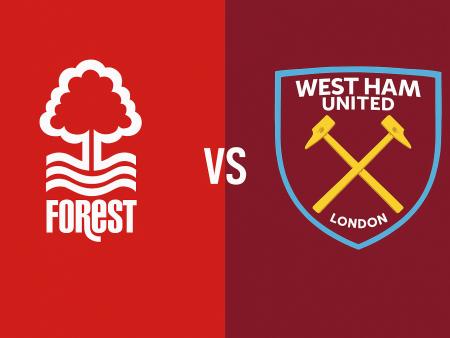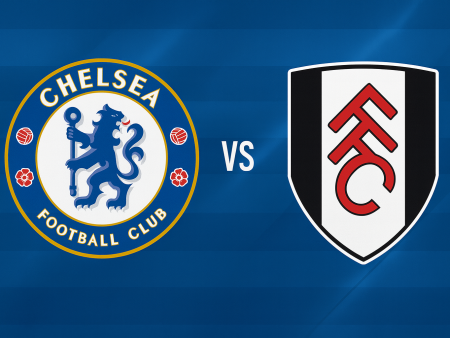Match Overview: Eintracht Frankfurt Edges Wolfsburg in a Seven-Goal Bundesliga Thriller
The 2020-21 Bundesliga campaign delivered another pulsating contest as Eintracht Frankfurt triumphed 4-3 over VFL Wolfsburg on Matchday 28. Beyond the thrilling scoreline, this clash featured relentless commitment, tactical intrigue, and a dramatic shake-up in the battle for a top-three finish. This comprehensive tactical analysis explores the key systems, strategic nuances, and standout performers that shaped one of the season’s most exhilarating fixtures.
Eintracht Frankfurt’s Tactical Identity: Dynamic 3-4-1-2 Formation
Eintracht Frankfurt approached the match deploying their well-drilled 3-4-1-2 structure, a system made more potent since Luka Jovic’s return from Real Madrid. With Kevin Trapp between the posts, defensive responsibilities fell to a makeshift back three: Stefan Ilsanker took charge in the center, flanked by young defenders Tuta and Odite Ndicka. This trio faced a demanding afternoon against Wolfsburg’s imposing striker Wout Weghorst and the unpredictable Ridle Baku.
Filip Kostic, operating as left wing-back, found himself frequently tested defensively but was equally pivotal in transitions. On the right, Erik Durm enjoyed more offensive freedom, given Josip Brekalo’s limited threat down his flank. Central midfielders Djibril Sow and Sebastian Rode provided stability and energy, while Daichi Kamada linked play in his advanced midfield role. At the top, the striking duo of Jovic and Andre Silva consistently exploited spaces, providing a decisive edge in attack.
Flexible Defensive Shape and Role of Wing-Backs
Defensively, Frankfurt often morphed into a 5-2-1-2 formation. Kamada would stay advanced, ready to spearhead counter-attacks. A distinctive feature was the positioning of the wing-backs during defensive set-pieces: rather than dropping deep to defend corner kicks, Kostic and Durm stayed wide and high, serving as immediate outlets for rapid breaks. This tactical setup stretched Wolfsburg across the width of the pitch, allowing Frankfurt’s central players to surge forward during transitions and giving the wing-backs a critical role in both phases.
Key strengths of this system included:
- Quick vertical movement through the wide channels
- Use of wing-backs as launch pads for counter-attacks
- Midfielders and strikers making proactive vertical runs to support breaks
Rapid Transitions and Wing-Back Influence
Frankfurt’s attacking threat was defined by explosive transitions, predominantly ignited by their wing-backs. Upon regaining possession, players instinctively directed the ball towards the flanks, trusting the pace and stamina of Kostic (left) and Durm (right) to drive the play forward. Kostic’s ability to combine with forwards or deliver teasing crosses made Frankfurt’s left side particularly dangerous.
Erik Durm’s tendency to underlap into central scoring positions created an additional threat, as showcased by his match-winning goal-a direct result of his inverted movement following a Kostic cross. Beyond the wing-backs, Kamada thrived with his acceleration and vision, repeatedly drawing defenders and releasing his strikers into space, a pattern that led to Silva’s crucial goal.
Building Play from the Back: Triangles on the Flanks
Frankfurt’s commitment to possession under pressure was evident as they frequently attempted to build from the back despite Wolfsburg’s aggressive pressing. The three central defenders would initiate moves, swiftly feeding the ball to wide areas where combinations developed. The interplay between the near-sided striker, central midfielder, and wing-back created dynamic triangles, enabling fluid ball progression and overloading Wolfsburg defensively.
Andre Silva’s tactical intelligence shone as he regularly dropped deep to receive possession, dragging opponents out of shape and setting up overlapping runs for Jovic or the advancing wing-backs.
Pressing Strategy: Energy and Aggression
Eintracht Frankfurt’s pressing game was characterized by coordinated energy and a willingness to commit numbers in challenging situations. Initially, Wolfsburg found some success bypassing the press with quick passing into central areas, exploiting occasional overcommitment from the hosts. However, as the game evolved, midfielders Rode and Sow adjusted, reducing this vulnerability and forcing Wolfsburg into longer, riskier passes.
Notably, some of Frankfurt’s best chances and goals arose immediately after turnovers won through this high-octane pressing, underlining how their approach could create both opportunities and exposure.
VFL Wolfsburg’s Approach: Structured 4-2-3-1 with Narrow Attacking Focus
Wolfsburg stayed loyal to their tried-and-tested 4-2-3-1 shape throughout the match. Defensively and offensively, the team operated with a narrow setup, aiming to crowd the central corridors and facilitate quick, vertical interplay.
Koen Casteels attempted to build from the back in goal, but the backline-particularly center backs John Brooks and Maxence Lacroix-sought direct routes forward rather than elaborate buildup. Kevin Mbabu played an impactful but risky attacking role at right back, frequently overlapping a cutting-in Baku to create width on the right, but this aggression left Wolfsburg vulnerable defensively against Kostic.
Central midfielders Maximilian Arnold and Xaver Schlager provided relentless effort both sides of the ball, with Arnold orchestrating attacks while Schlager rotated into advanced or wide positions. Yannick Gerhardt added pressing energy and transitions from his attacking midfield position. On the wings, Brekalo was less involved than Baku, but contributed a standout assist for the opening goal. Up front, Wout Weghorst was a constant handful, excelling in hold-up play, knock-downs, and link-up actions.
Attacking Patterns: Centralization and Direct Play
Unlike Frankfurt’s emphasis on width, Wolfsburg’s attack was built on a compact setup. Their wide players frequently tucked in, leaving space for overlapping full-backs and promoting rapid combination play through the center and half-spaces. This structure facilitated:
- Overlapping runs by full-backs (especially Mbabu)
- Rotational movement between midfielders and forwards
- Quick vertical passing into Weghorst or advancing runners
The effectiveness of this approach was clear in Wolfsburg’s frequent one-touch combinations around the box and their third goal, which came from a direct long ball that beat Frankfurt’s defensive line.
Final Third Combinations and Finishing
Wolfsburg’s approach in the final third emphasized fast, incisive passing, often centered around Weghorst’s ability to either hold up play or flick balls on to supporting runners. The midfield trio of Arnold, Schlager, and Brekalo contributed creativity, with Baku’s dynamism providing an additional attacking edge.
The team was also unafraid of taking shots from outside the area, and many attacks concluded with forceful play, whether through low-driven crosses, ricochets, or efforts to force corners and unsettle Frankfurt’s defense. As the match progressed, Wolfsburg made a late switch to a high-risk 4-2-4 formation in pursuit of an equalizer, but were unable to break down Frankfurt’s resistance.
Defensive Pressing: High Energy, High Risk
Defensively, Wolfsburg began with a moderately conservative press but intensified their aggression after halftime. Yannick Gerhardt’s energetic pressure led to a key Frankfurt error and Weghorst’s equalizer early in the second period. However, Wolfsburg’s high press created gaps, particularly on the flanks.
As Frankfurt’s wing-backs positioned high and wide, Wolfsburg’s narrow setup struggled to adjust. Filip Kostic exploited this space, repeatedly initiating decisive attacks and outpacing his defender, Mbabu. In attempting to regain control, Wolfsburg’s increased pressing intensity left them exposed to Frankfurt’s quick breaks, ultimately contributing to their undoing.
Summary and Implications for the Bundesliga Run-In
Although Wolfsburg showed flashes of superior organization and creativity, it was Eintracht Frankfurt’s balanced aggression and clinical finishing that sealed victory in this encounter. While both sides suffered defensive frailties-Wolfsburg from lack of width, Frankfurt from handling Weghorst and aerial battles-the tie was defined by dynamic, attacking football and tactical adaptations on both sides.
Standout contributions from Frankfurt’s wing-backs and the lethal partnership of Silva and Jovic proved decisive, while Wolfsburg’s narrow, high-pressing system highlighted both their potential and vulnerabilities. The result significantly impacts the race for third place as the Bundesliga season nears its conclusion.
Key Takeaways from the Tactical Duel
- Frankfurt’s wing-backs were crucial to both phases of play, enabling quick counter-attacks and adding width to stretch Wolfsburg’s shape.
- Wolfsburg’s narrowness facilitated fluid central combinations but left them open to Frankfurt’s wide overloads and transitions.
- Both teams demonstrated strengths and weaknesses in transition, with high pressing creating both goals and defensive issues.
- Clinical finishing and ability to exploit transition moments ultimately decided the match in Frankfurt’s favor.
As the Bundesliga approaches its finale, this encounter will be remembered as a tactical showdown loaded with drama, quality, and significant implications for Champions League qualification.













